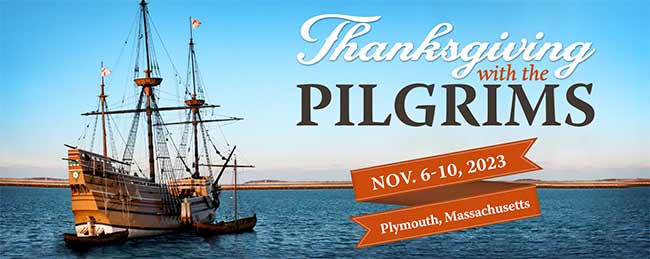
“He has shown you, O mortal, what is good. And what does the Lord require of you? To act justly and to love mercy and to walk humbly with your God.” —Micah 6:8
The Birth of Chief Justice John Marshall,
September 24, 1755
 ohn Marshall was one of the most important men of his age or any age: soldier, lawyer, statesman, diplomat, congressman, secretary of state, and the most powerful and transformative Chief Justice of the Supreme Court in the history of the United States. John first saw the light of day on September 24, 1755, as the first of fifteen children (all of whom lived well into adulthood) born to Thomas Marshall in the village of Germantown in Fauquier County, Virginia. Thomas served as land agent for Lord Fairfax of Cameron, the only resident peer of Scotland living in America, and owner of more than five million acres, thirty plantations and hundreds of slaves. Lord Fairfax also employed seventeen-year-old George Washington as surveyor of his lands in the Shenandoah River Valley. ohn Marshall was one of the most important men of his age or any age: soldier, lawyer, statesman, diplomat, congressman, secretary of state, and the most powerful and transformative Chief Justice of the Supreme Court in the history of the United States. John first saw the light of day on September 24, 1755, as the first of fifteen children (all of whom lived well into adulthood) born to Thomas Marshall in the village of Germantown in Fauquier County, Virginia. Thomas served as land agent for Lord Fairfax of Cameron, the only resident peer of Scotland living in America, and owner of more than five million acres, thirty plantations and hundreds of slaves. Lord Fairfax also employed seventeen-year-old George Washington as surveyor of his lands in the Shenandoah River Valley.
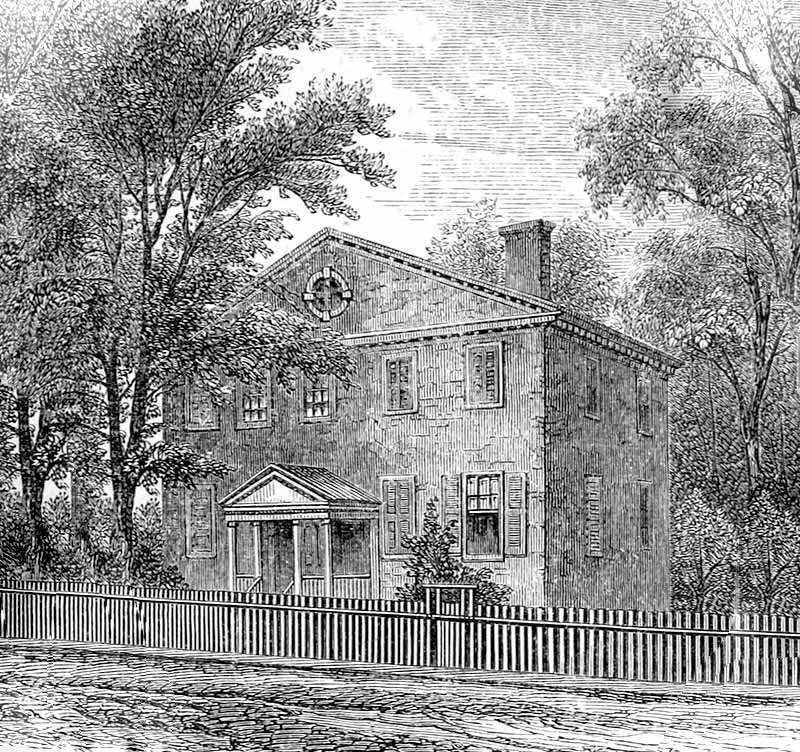
Birthplace of John Marshall in Germantown, Virginia

John Marshall (1755-1835)
|
Marshall’s parents home-schooled him but for one year of formal schooling (where he befriended fellow student, future President James Monroe). John’s parents provided him with plenty of excellent books and he became a life-long voracious reader, mastering Blackstone’s Law Commentaries. A clergyman from Glasgow, Scotland lived on the Marshall estate and tutored John in exchange for room and board. Looking back on his youth, as Supreme Court Chief Justice, John Marshall said of his father that “to his care I am indebted for anything valuable which I may have acquired in my youth. He was my only intelligent companion, and was both a watchful parent and an affectionate friend.”
In the War for American Independence, John served in the 11th Virginia Infantry as a lieutenant, fighting in the Battle of Brandywine, and surviving the winter at Valley Forge. He was furloughed in 1780 to attend The College of William and Mary where he read law with George Wythe, the foremost legal mind in the colonies. He rejoined his military command in 1781 and was elected to the Virginia House of Burgesses the following year. John’s legal career prospered after he purchased his cousin Edmund Randolph’s firm in Richmond, upon the latter’s election to the Governorship.
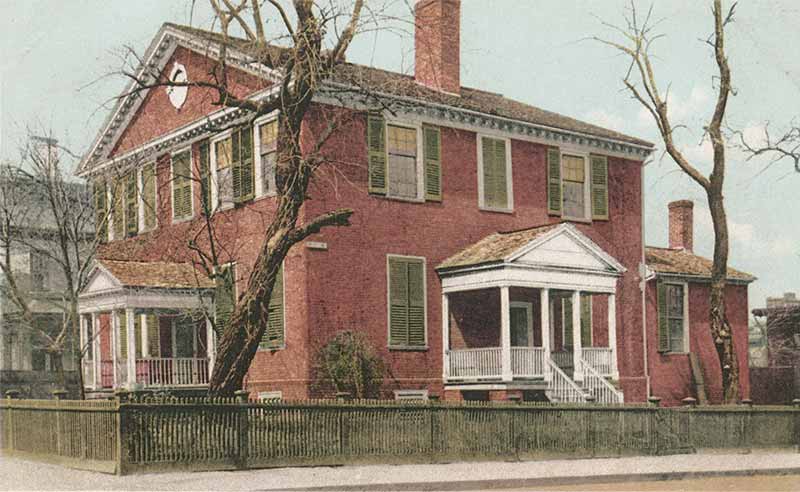
Marshall’s Richmond, Virginia home
Marshall came to the conviction that the Articles of Confederation were too weak to sustain the Union of the States, and thus supported the Constitutional Convention and its creation of the Constitution of the United States in 1789, Marshall fought for its ratification in Virginia, working hand-in-glove with James Madison and George Washington against Patrick Henry and the Anti-federalists. As the country divided into political factions during the 1790s, Marshall teamed up with Alexander Hamilton’s Federalist party against his distant cousin Thomas Jefferson, arguing for neutrality in foreign affairs, high tariffs, and a more powerful chief executive. He got to argue an important case before the Supreme Court, making a powerful impression, though he lost the case.
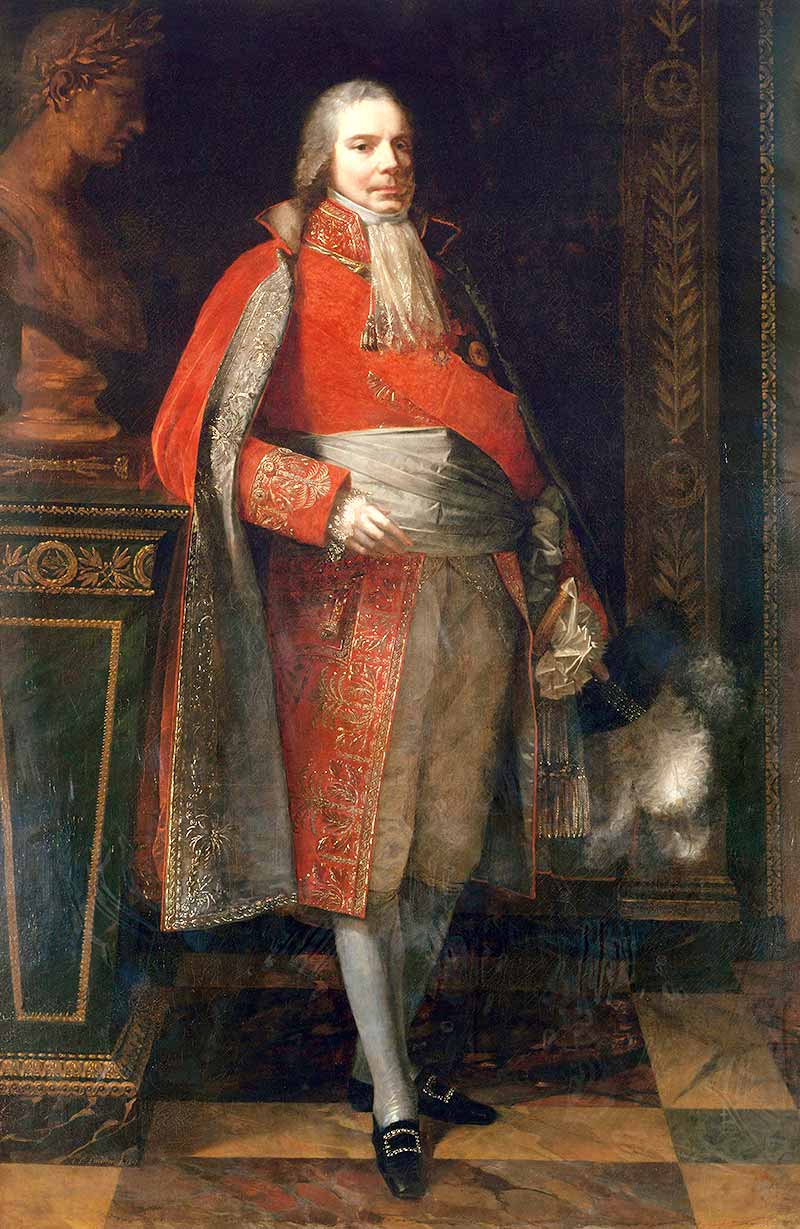
Charles-Maurice de Talleyrand-Périgord (1754-1838)
Federalist President John Adams sent Marshall with two other prominent politicians to France as envoys to protest the revolutionary French depredations against American shipping. French Foreign Minister Talleyrand demanded bribes to meet with the American diplomats, triggering the XYZ Affair and the “Quasi-war” with France. With his high reputation as a lawyer and experience in diplomacy, Marshall’s political career bloomed with election to Congress as a representative, and his selection as Secretary of State with the express purpose of ending the Quasi-war with France, bolstering relations with Britain, and ending the war against the Barbary pirates.

President John Adams’ nomination of John Marshall to the position of Supreme Court Justice, dated and signed January 20, 1801
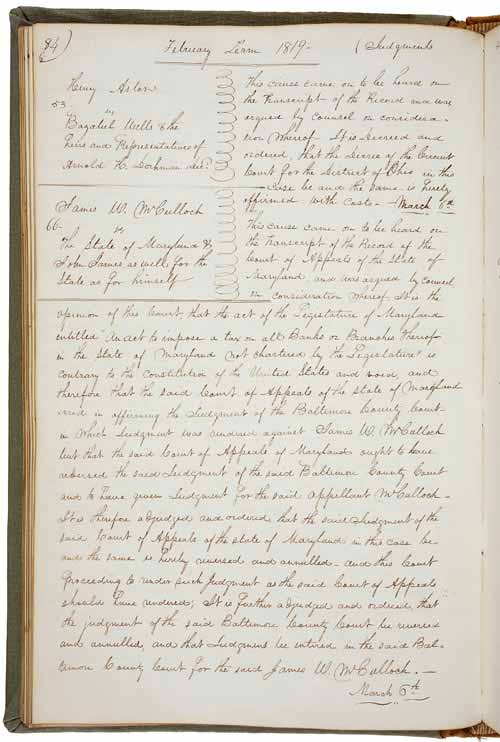
The text of the McCulloch v. Maryland decision, as recorded in the minutes of the Supreme Court
|
With the Adams presidency winding down, the Chief Justice of the Supreme Court died and the president nominated Marshall, who was confirmed by the senate while continuing as Secretary of State! Adams later said that “my gift of John Marshall to the people of the United States was the proudest act of my life.” He would serve in that position from 1801 to 1835, increasing the power of the Court exponentially and shaping the legal system of the United States for all time. “His influence on learned men of the law came from the charismatic force of his personality and his ability to seize upon the key elements of a case and make highly persuasive arguments.”* The Marshall court issued 1,000 decisions during his tenure, and he authored about half of them. Some of the most important decisions include Marbury vs. Madison, the first case in which the Court struck down a federal law as unconstitutional, asserting the power of judicial review. Fletcher vs. Peck was the first case to declare a state law unconstitutional. In McCullough v. Maryland, the court claimed the Constitution possessed “implied powers” to act on behalf of the American people. Many other important decisions came from the Marshall Court in the thirty-four years of influence. In one case, President Andrew Jackson, a bitter political enemy of Marshall, implied he would not enforce a court ruling regarding the unconstitutional arrest of missionaries to the Cherokee.
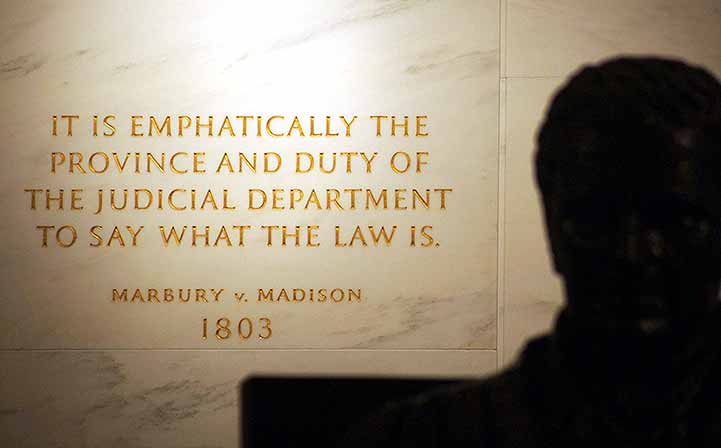
A quote from Marbury vs. Madison shadowed by the John Marshall monument
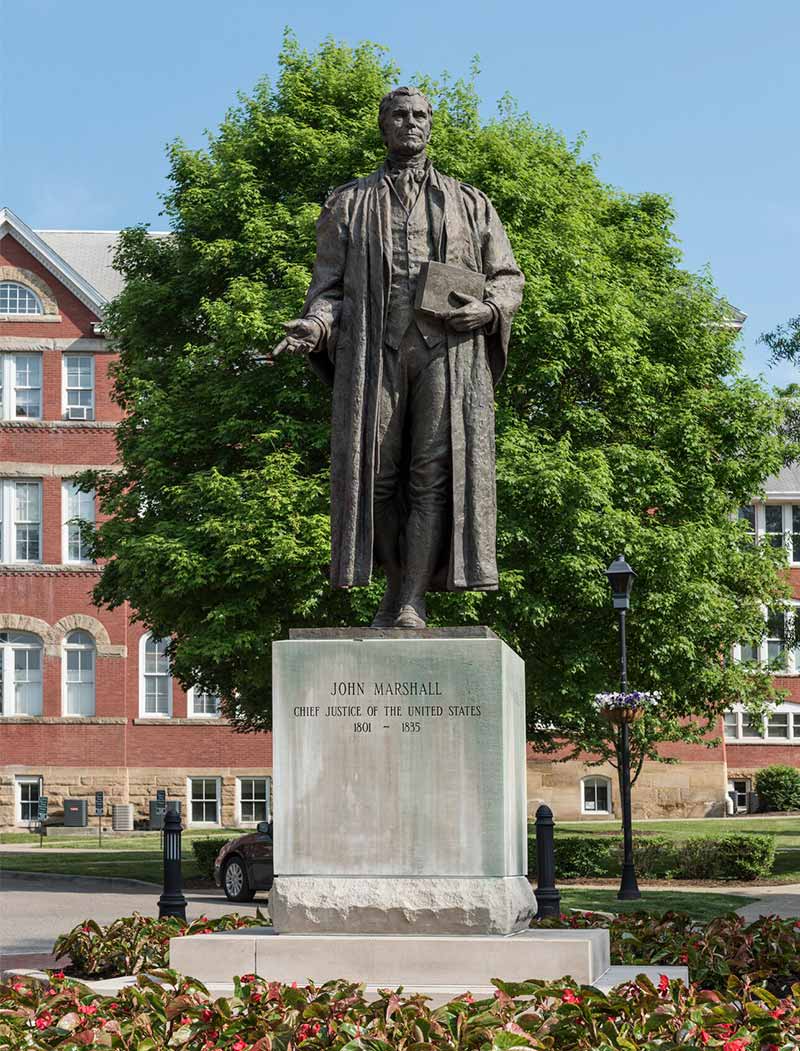
Statue of U.S. Supreme Court Chief Justice John Marshall in a plaza at Marshall University, Huntington, West Virginia,
named for the famed jurist
|
In the midst of his court duties, Marshall wrote a five-volume biography of George Washington—the first presidential biography—and prepared an abridgement which was published three years after his death. The great justice was married to Mary “Polly” Ambler who bore him ten children, six of whom lived to adulthood. He owned, bought and sold hundreds of slaves in his lifetime. A large number of his relatives fought for the Confederacy; his grandson James K. Marshall, a graduate of VMI, was killed leading Pettigrew’s Brigade in Pickett’s Charge at Gettysburg. Marshall was also an active Freemason, rising to “Grand-Master of Masons in Virginia.” His biographers claim that he “was not religious, rejected the deity of Christ, but attended Episcopal churches on occasion.” He died in 1835.
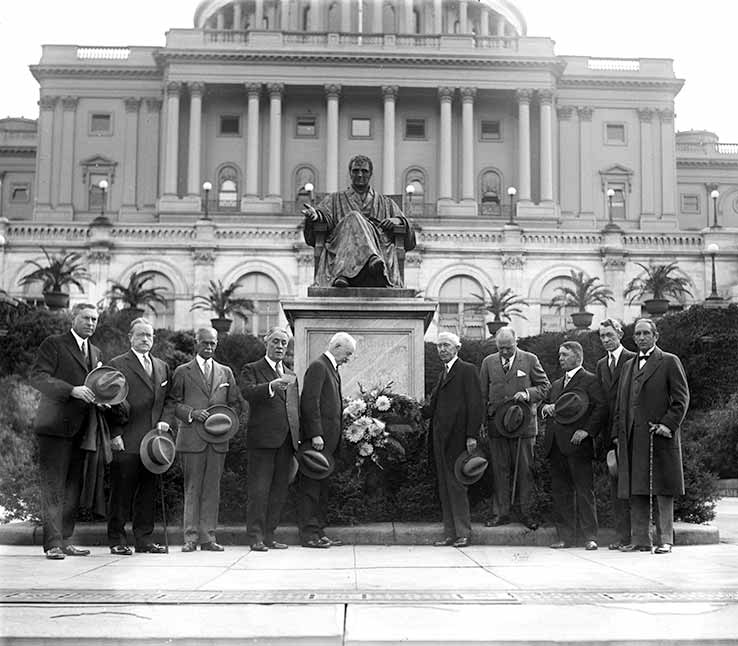
Wreath-laying at Marshall Memorial, US Capitol, Washington, DC, 1928
Dozens of towns, counties, and schools are named after John Marshall. Monuments to his memory can be found in Virginia, Washington, DC, and Philadelphia. A half-dozen colleges and universities bear his name. The influence of this one man on the legal heritage of the nation cannot be over-stated. The winds of Providence can be seen in many ways throughout the long life of John Marshall of Virginia.
*The Life of John Marshall by Albert J. Beveridge, Vol. 4

Image Credits:
1 Marshall’s Birthplace (wikipedia.org)
2 John Marshall (wikipedia.org)
3 Richmond Home (wikipedia.org)
4 Tallyrand (wikipedia.org)
5 Nomination (wikipedia.org)
6 Minutes (wikipedia.org)
7 Quote & Memorial (wikipedia.org)
8 Marshall University (wikipedia.org)
9 Wreath-laying (wikipedia.org)
|






